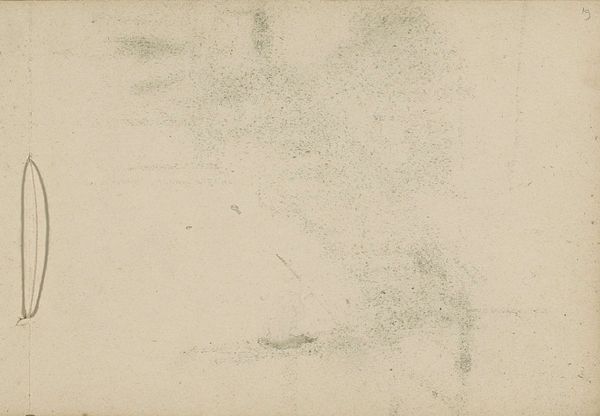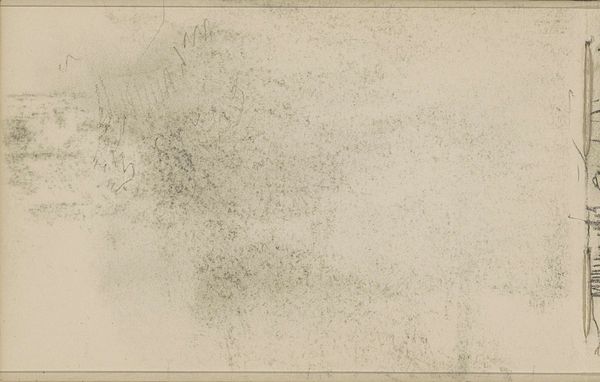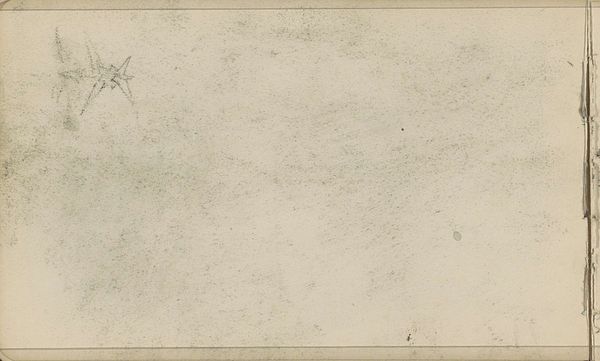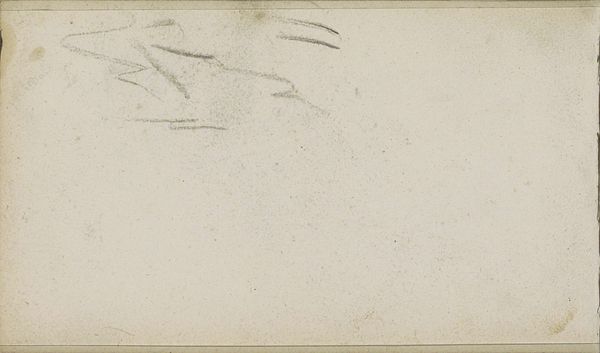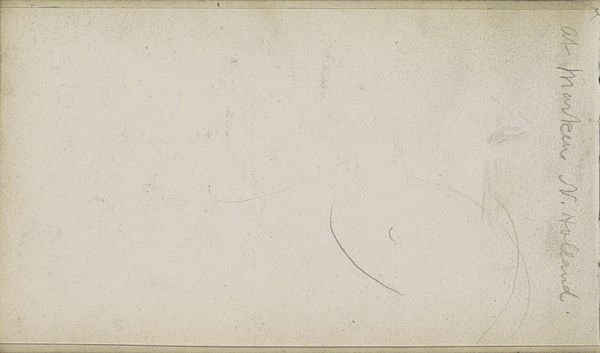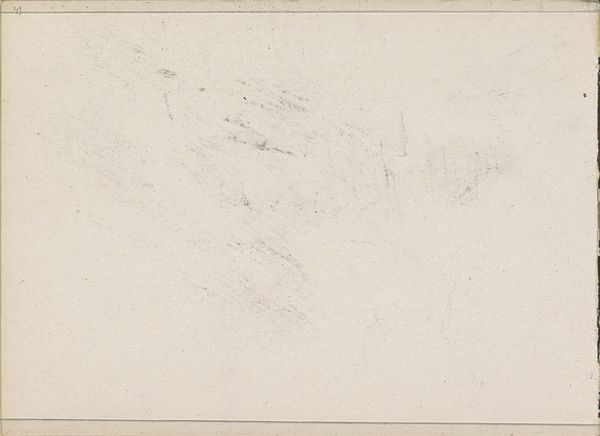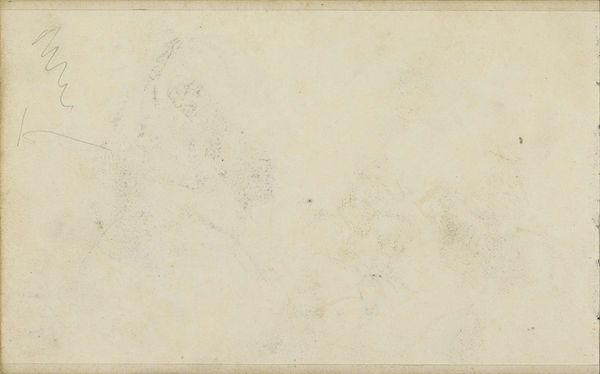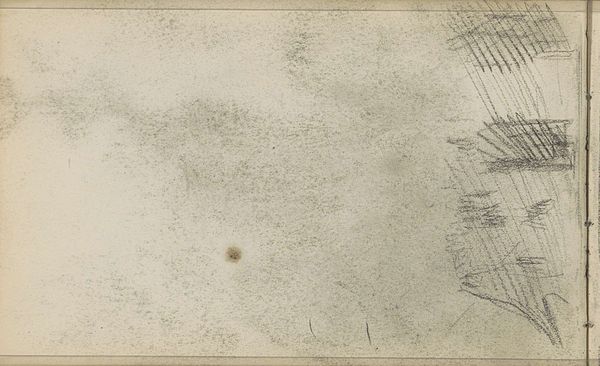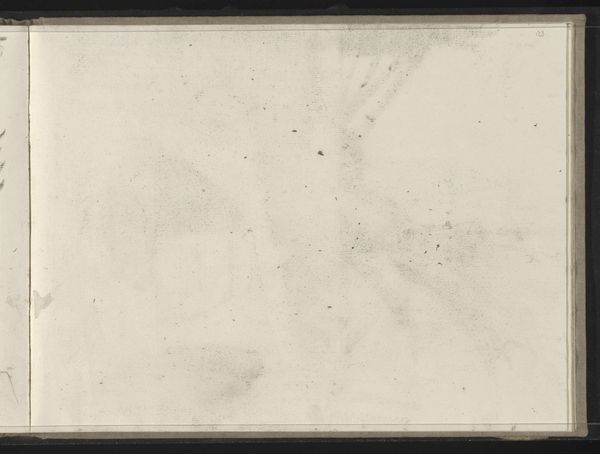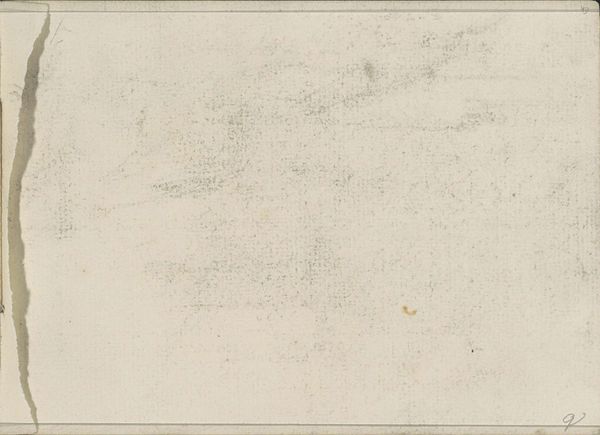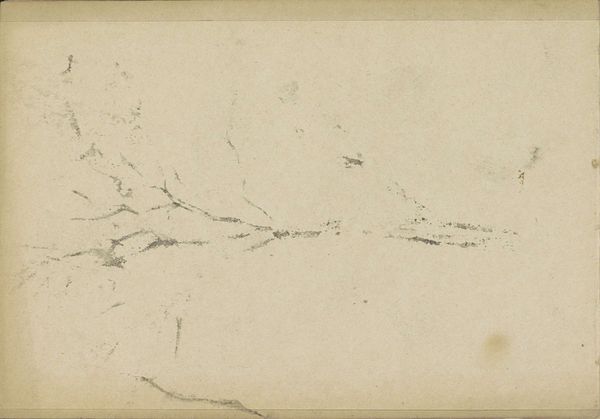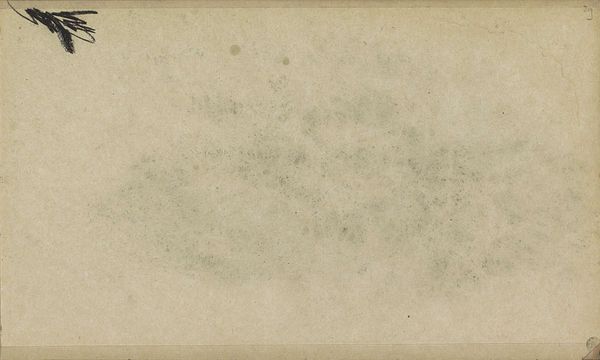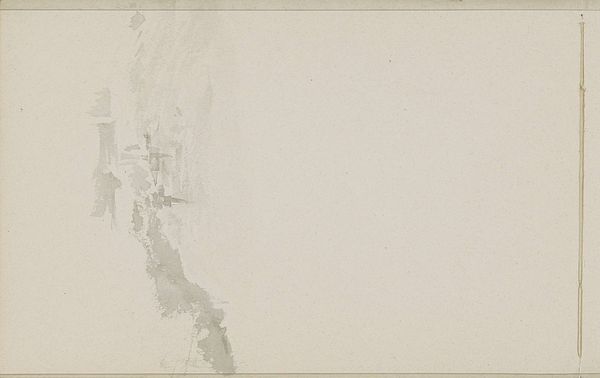
Copyright: Rijks Museum: Open Domain
Curator: At first glance, this drawing is unsettlingly pale, almost spectral. What's going on in this piece? Editor: We're looking at "Abklatsch van de krijttekening op pagina 26," or "impression of the chalk drawing on page 26", created by Willem Witsen between approximately 1887 and 1920. It is a graphite drawing on paper. Curator: Graphite is really just processed carbon, isn’t it? The way the artist has seemingly lifted the original chalk onto this paper – that replicative labour has its own allure here. It’s a ghostly double, produced through this interesting transfer technique. The image itself barely discernible, a landscape perhaps. It's evocative. Editor: Landscape is the tag that the museum uses, and I'm interested in this concept of a ghost. Considering that the Rijksmuseum itself exists within the cultural and political history of the Netherlands, and it is within such institutions that works gain recognition, can you tell me a bit about how we situate this drawing? What socio-political implications emerge? Curator: Absolutely. Looking at the impression—the method is intriguing because it speaks to early reproduction techniques and how artistic ideas circulated pre-digital age. Graphite on paper, while seemingly simple, democratized art-making, being relatively inexpensive and accessible. It challenges notions of unique genius. It shows that even sketches can have a life of their own. Editor: Yes, the accessibility is an interesting note, since at the time that this was made, the democratization of imagery and access to art institutions, what we would call today "museum accessibility," was beginning to be considered a necessary component of public life, although those concepts were nascent in public consciousness. It's just faint enough to be an apparition. How very ghostly is that relationship between a place, its politics, its art? Curator: A poignant reflection. That sense of "almost there" adds a layer of historical and social commentary to this seemingly simple landscape drawing. Editor: It makes you think, what is being made public and who is making it accessible in this framework of politics? Very evocative indeed. Curator: For me, understanding the material origins enhances appreciation. It reframes the creative labor and production. Editor: Exactly. It emphasizes the power of display within institutions such as the Rijksmuseum, shaping narratives, influencing public perception. Curator: Thank you, what a ghostly exchange about ghosts. Editor: Agreed. The history makes a work that seems ephemeral become so permanent, doesn't it?
Comments
No comments
Be the first to comment and join the conversation on the ultimate creative platform.

